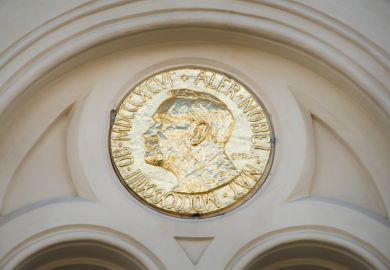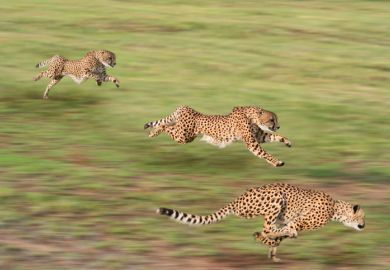As Francois Jacob emphasised, scientists never know in advance how their work will turn out. On the other hand, historians of science do know the end result of scientists' endeavours. How, therefore, are they to understand the numerous possibilities that existed before the research began or before its often tortuous episodes reached their denouements? In short, is all historical investigation in this field inevitably teleological?
As judged by his soul-searching along these lines, the distinguished science historian Larry Holmes, who died before this book was published, was well aware of the pitfalls of teleological inevitability in the exploration of the discoveries of scientists.
However, he argued that day-to-day narratives of their work, particularly if supported by a detailed analysis of their notebooks, can go at least some way to solving this problem: if these stories are not compressed and oversimplified, the illusion that the scientific process follows a parsimonious, logical course towards an inevitable conclusion can be avoided.
To explore the pathways towards important scientific discoveries, Holmes describes the lives and work of six scientists: Antoine Lavoisier, Claude Bernard, Hans Krebs, Matthew Meselson, Franklin Stahl and Seymour Benzer.
He had already written extensive biographies of Krebs, Meselson and Stahl, and during the last six months of his life had drafted several chapters of a biography of Benzer.
Here, his goal is to identify common threads in their careers and work.
Despite the diversity of their research, he makes a convincing case that such patterns exist. For example, they all spent their early years in pre-eminent scientific stables and came under the influence of outstanding mentors. Early recognition of their work by the scientific establishment also seems to have played an important role in their later development.
In each case there was a latent period during which they learnt and developed the tools of their trade, and, although their work diversified widely over the years however much they appeared to stray into new pastures, it was usually possible to trace connections with the central theme of their research.
Within this general framework there are some complex personal issues, however. Although Krebs attributed his success to the early influence of Otto Warburg, who similarly testified to the importance of his time in the laboratory of Emil Fischer, he emphasised the difficulties of trying to emerge from the shadows of his mentor's eminence. And in this respect Bernard's early dependence on Francois Magendie seems to have led to a particularly ambivalent relationship.
Another feature that these scientists shared was that, although their productivity showed episodic rhythms over the years, they remained totally committed and productive for the whole of their working lives, often into ripe old age. At a time when a British Nobel laureate has sought employment in the US, reportedly because of lack of provision for ageing scientists, our universities should take note.
An intriguing question is whether they have their "Eureka moments".
Archimedes' experiences in the bathtub are familiar, but there have been other such moments: Henri Poincare's realisation that Fuchsian functions are identical with those of non-Euclidian geometry as he boarded a bus, Darwin's awakening when he first read Malthus, and, more recently, James Watson's inspirational moment when playing with a model of the four bases of DNA he became aware that they fitted together in two pairs.
Holmes goes to considerable lengths to determine whether these sudden insights played a role in the investigative pathways of his scientists. He concludes that although it is impossible to have reliable records of the thoughts of individuals about such experiences, they are more likely to be the natural culmination of long periods of creative thinking rather than miraculous moments of inspiration.
In an afterword, Jed Buchwald suggests that Holmes set standards few historians can hope to emulate. In finding a common thread through the careers and approaches to scientific inquiry among a group of distinguished scientists, he has bequeathed a remarkable testament to the narrative approach to investigative pathways that will be of value not only to historians of science, but also to scientists themselves.
At a time of considerable public concern about the role and direction of science in society, a wider appreciation of the way in which science works is vital. Readers will not find a better description of the pathways to scientific discovery, even if they are still left pondering what it is that raises a handful of scientists to true greatness.
Sir David Weatherall is emeritus regius professor of medicine, Oxford University.
Investigative Pathways: Patterns and Stages in the Careers of Experimental Scientists
Author - Frederic Lawrence Holmes
Publisher - Yale University Press
Pages - 225
Price - £25.00
ISBN - 0 300 10075 2



